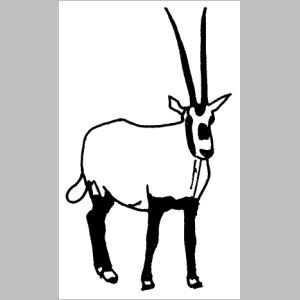Bulletin 12 - November 1980: Reproductive Patterns of the Arabian Oryx
Reproductive Patterns of the Arabian Oryx
by Chris FurleyVeterinarian, Al Ain Zoo
The following tables show the dates of significance with regard to breeding of the Arabian Oryx in Al Ain Zoo.
Table 1
|
Dam |
Date of Birth |
Date at first successful mating |
Date at first calf |
(Age: |
0 months |
31.5 months |
39.5 months) |
(Age: |
0 months |
17 months |
25 months) |
(Age: |
0 months |
19 months |
27 months) |
(Age: |
0 months |
17 months |
25 months) |
The age at which female Arabian Oryx may produce their first calf has been quoted at 2.5 to 3.5 years by H. Jungius. The same author also states the gestation period to be nine months. The dates for the first successful matings in the table have been calculated on the assumption that the gestation period is eight months (Fowler). It can be easily seen that two Oryx, Hind and Sameera, were both mated at the age of 17 months and produced their first calves at 25 months of age. There is no guarantee that the first successful mating takes place during the first oestrus; there may be silent heats before this time. The Beisa Oryx and Fringe-eared Oryx in the Zoo take a maximum of 19 to 20 months before the first successful mating may occur.
Table 2
| Dam | |||||||||||
| Lulu | |||||||||||
| Nabeela | |||||||||||
This table shows the mating-birth-mating intervals for the two eldest female Oryx in the collection. The mating-birth interval is the gestation period and is therefore constant, but the birth-mating interval is variable. Lulu took eight months after her second and third calves to become pregnant again whereas Nabeela took seven months and 2.5 months respectively. The reasons for this difference may lie in the individual variation among females with regard to oestrus cycling rather than dietary or climatic reasons.
Table 3
| No. of calves | 1 1 |
1 1 |
1 1 |
1 |
1 1 |
Distribution of births throughout the year
This shows the distribution of births of Arabian Oryx at the Zoo throughout the year, and three main peaks are apparent; firstly January, then March to June, and lastly August. It may be too early to state that this is the normal birth distribution of the Oryx in this part of the world, as more information is required. It is interesting to note, however, that births occur during the coldest and the hottest months of the year. The Arabian Oryx, in common with most other ungulates, is a monotcous species.
